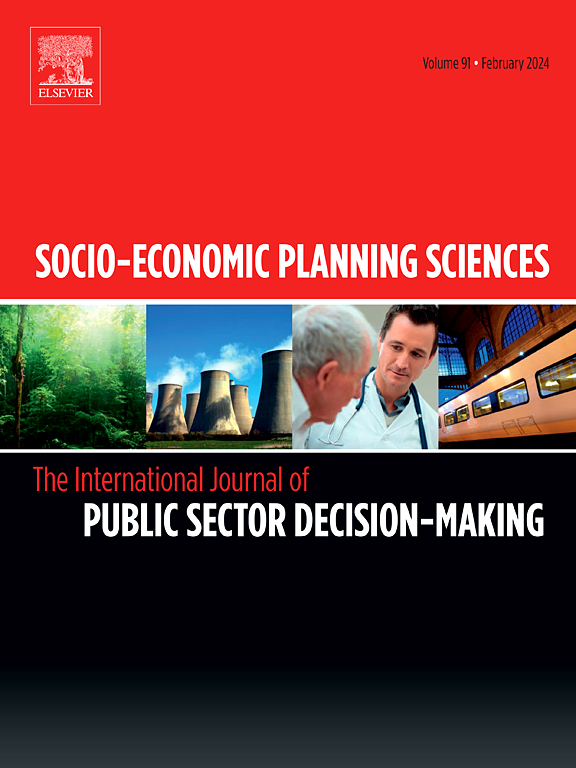Bank branch desertification and the design of a postal banking network
IF 5.4
2区 经济学
Q1 ECONOMICS
引用次数: 0
Abstract
The desertification of bank branches, driven by digital transformation, has exacerbated financial exclusion among individuals less keen to adopt digital channels or those living in lower-income and less densely populated regions. In this scenario, postal operators have emerged as main competitors in providing physical and face-to-face financial services in areas without a banking presence, leveraging their capillary network of post offices. In this work, we propose a mathematical model to support postal providers in decision-making concerning the network design for consulting services. The model aims to maximize the attracted demand of customers who are financially excluded due to branch closures, by identifying the best locations among post offices where to activate consulting services and planning the availability in terms of time windows. The model has been applied to the rural areas of the Campania region in southern Italy, where bank branch closures have significantly impacted customers’ access to banking services. The results demonstrate that the model can effectively support the consulting network design process, offering an effective framework for making appropriate decisions based on preferred provision policy.
银行网点沙漠化与邮政银行网点的设计
在数字化转型的推动下,银行网点的沙漠化加剧了不太热衷于采用数字渠道的个人或生活在低收入和人口密度较低地区的人的金融排斥。在这种情况下,邮政运营商已经成为主要竞争对手,在没有银行存在的地区提供实体和面对面的金融服务,利用他们的毛细血管网络的邮局。在这项工作中,我们提出了一个数学模型来支持邮政服务提供商在咨询服务网络设计方面的决策。该模式旨在通过确定邮局中激活咨询服务的最佳地点,并根据时间窗口规划可用性,最大限度地提高因分行关闭而在财务上被排除在外的客户的吸引需求。该模型已应用于意大利南部坎帕尼亚地区的农村地区,那里的银行分行关闭严重影响了客户获得银行服务的机会。结果表明,该模型能够有效地支持咨询网络设计过程,为基于优先供应策略的适当决策提供了有效的框架。
本文章由计算机程序翻译,如有差异,请以英文原文为准。
求助全文
约1分钟内获得全文
求助全文
来源期刊

Socio-economic Planning Sciences
OPERATIONS RESEARCH & MANAGEMENT SCIENCE-
CiteScore
9.40
自引率
13.10%
发文量
294
审稿时长
58 days
期刊介绍:
Studies directed toward the more effective utilization of existing resources, e.g. mathematical programming models of health care delivery systems with relevance to more effective program design; systems analysis of fire outbreaks and its relevance to the location of fire stations; statistical analysis of the efficiency of a developing country economy or industry.
Studies relating to the interaction of various segments of society and technology, e.g. the effects of government health policies on the utilization and design of hospital facilities; the relationship between housing density and the demands on public transportation or other service facilities: patterns and implications of urban development and air or water pollution.
Studies devoted to the anticipations of and response to future needs for social, health and other human services, e.g. the relationship between industrial growth and the development of educational resources in affected areas; investigation of future demands for material and child health resources in a developing country; design of effective recycling in an urban setting.
 求助内容:
求助内容: 应助结果提醒方式:
应助结果提醒方式:


